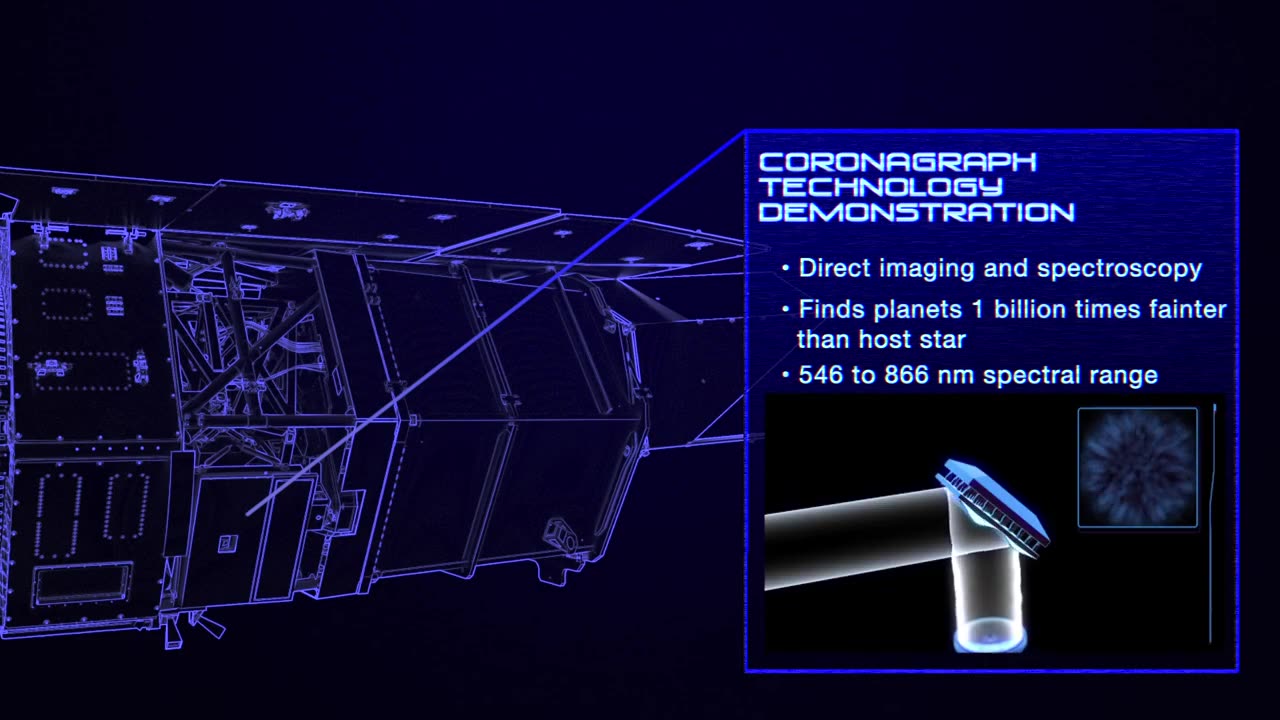Premium Only Content

Experience the Nancy Grace Roman Space Telescope with NASA
The NASA Nancy Grace Roman Space Telescope project, set to launch no later than May 2027, will contribute to the understanding of some of the universe's greatest mysteries. The most comprehensive image of the universe ever seen with the same depth and precision as the Hubble Space Telescope will be provided by the cutting-edge telescope on the Roman spacecraft, which will play a vital part in this. The critical design review for the Nancy Grace Roman Space Telescope was successful, indicating that all design and developmental engineering work is now finished.A high-precision survey mission called the Roman Space Telescope will improve our knowledge of basic physics. Roman will detect infrared light, which is invisible to human vision, like other space observatories like Spitzer and the James Webb Space Telescope. Infrared radiation is absorbed by Earth's atmosphere, which makes it difficult for ground-based observatories to operate. Roman has the benefit of flying above the atmosphere in space.The primary mirror, which has a diameter of 2.4 metres, will be used by the Roman Space Telescope to gather and concentrate light. Although it is the same size as the main mirror of the Hubble Space Telescope, it weighs only one-fourth as much, demonstrating an amazing advancement in telescope technology. The mirror collects light, which it then transmits to two scientific apparatuses. Astronomers will be able to map the presence of mysterious dark matter, which is only known through its gravitational effects on regular matter, thanks to the spacecraft's enormous camera, the Wide Field Instrument (WFI). The WFI will aid researchers in their study of the similarly enigmatic "dark energy," which is responsible for the universe's accelerated expansion. Whatever it is, dark energy might hold the secret to deciphering the universe's future.The WFI's ability to detect both smaller planets and farther-off planets than any previous survey will be used to study our own galaxy and learn more about the planets that orbit other stars (planets orbiting stars other than the Sun are referred to as "exoplanets"). The results of this survey will reveal whether our solar system is relatively common, exceptional, or unique in the galaxy. The WFI will be able to conduct extensive surveys that would take Hubble hundreds of years to complete while maintaining the same resolution as Hubble and having a field of view that is 100 times larger. By obstructing the light from their home stars, Roman's Coronagraph Instrument will show off a method for directly imaging exoplanets. Roman's cutting-edge methods will increase our catalogue of exoplanets and allow us to understand more about them because astronomers have only directly observed a small portion of them thus far. Results from the Coronagraph will provide us the first chance to observe and characterise exoplanets that are three to ten times further from the Sun than Earth, or roughly halfway between Jupiter and Saturn in our solar system, than Earth. We can find habitable planets by researching the exoplanets' physical characteristics that are closest to Earth.
The NASA Nancy Grace Roman Space Telescope project, set to launch no later than May 2027, will contribute to the understanding of some of the universe's greatest mysteries. The most comprehensive image of the universe ever seen with the same depth and precision as the Hubble Space Telescope will be provided by the cutting-edge telescope on the Roman spacecraft, which will play a vital part in this. The critical design review for the Nancy Grace Roman Space Telescope was successful, indicating that all design and developmental engineering work is now finished.A high-precision survey mission called the Roman Space Telescope will improve our knowledge of basic physics. Roman will detect infrared light, which is invisible to human vision, like other space observatories like Spitzer and the James Webb Space Telescope. Infrared radiation is absorbed by Earth's atmosphere, which makes it difficult for ground-based observatories to operate. Roman has the benefit of flying above the atmosphere in space.The primary mirror, which has a diameter of 2.4 metres, will be used by the Roman Space Telescope to gather and concentrate light. Although it is the same size as the main mirror of the Hubble Space Telescope, it weighs only one-fourth as much, demonstrating an amazing advancement in telescope technology. The mirror collects light, which it then transmits to two scientific apparatuses. Astronomers will be able to map the presence of mysterious dark matter, which is only known through its gravitational effects on regular matter, thanks to the spacecraft's enormous camera, the Wide Field Instrument (WFI). The WFI will aid researchers in their study of the similarly enigmatic "dark energy," which is responsible for the universe's accelerated expansion. Whatever it is, dark energy might hold the secret to deciphering the universe's future.The WFI's ability to detect both smaller planets and farther-off planets than any previous survey will be used to study our own galaxy and learn more about the planets that orbit other stars (planets orbiting stars other than the Sun are referred to as "exoplanets"). The results of this survey will reveal whether our solar system is relatively common, exceptional, or unique in the galaxy. The WFI will be able to conduct extensive surveys that would take Hubble hundreds of years to complete while maintaining the same resolution as Hubble and having a field of view that is 100 times larger. By obstructing the light from their home stars, Roman's Coronagraph Instrument will show off a method for directly imaging exoplanets. Roman's cutting-edge methods will increase our catalogue of exoplanets and allow us to understand more about them because astronomers have only directly observed a small portion of them thus far. Results from the Coronagraph will provide us the first chance to observe and characterise exoplanets that are three to ten times further from the Sun than Earth, or roughly halfway between Jupiter and Saturn in our solar system, than Earth. We can find habitable planets by researching the exoplanets' physical characteristics that are closest to Earth.
-
 12:15
12:15
Reforge Gaming
3 hours agoPlayStation has a First Party Problem
6.19K2 -
 7:12
7:12
Rethinking the Dollar
3 hours agoIs the Catalyst For the Next Financial Crisis...Homeowners Insurance?
5.44K2 -
 2:02:13
2:02:13
LFA TV
19 hours agoHEGSETH HEARING LIVE! | LIVE FROM AMERICA 1.14.25 11am
65.7K26 -
 46:04
46:04
Grant Stinchfield
2 hours ago $2.61 earnedDevious Jack Smith Vindicates President Trump with One Line the Media Won't Repeat
25.7K2 -
 18:12
18:12
ROSE UNPLUGGED
1 day agoTom Homan: They Can't Cancel Me- I'm Not Going Away
12.4K -
 1:02:03
1:02:03
TheAlecLaceShow
3 hours agoNavy SEALs March on Washington for Pete Hegseth | The Alec Lace Show
10.6K2 -
 1:16:46
1:16:46
Bare Knuckle Fighting Championship
1 day agoThe Bare Knuckle Show with Brian Soscia
21K -
 58:42
58:42
The Dan Bongino Show
6 hours agoWill Trump's Inauguration Be Safe? (Ep. 2400) - 01/14/2025
571K1.27K -
 DVR
DVR
Scammer Payback
3 hours agoTrying to Make Scammers mad LIVE
27.6K3 -
 1:04:50
1:04:50
The Rubin Report
4 hours agoCo-Host Stunned as Adam Carolla Gives a Brutal Unhinged Message to Democrats
70.9K32